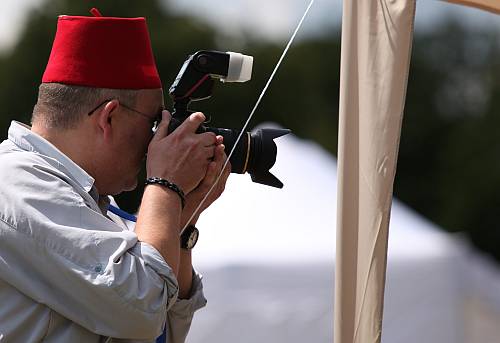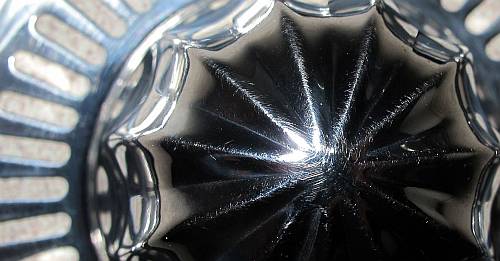
Poor photography stance could ruin your shot! Rehearse a smooth performance...
Click and go? No.
OK, it sounds simple. To take a shot in bright daylight just focus, point and click. Easy. No, not so easy. You need to think about your photography stance. Why?
Breath, shift, close, stab and roll – that’s why. These are some of the things people do when they take a photograph. Here is the full sequence. They line up the shot – everything just so… Then, they take a breath and shift their weight. Suddenly, they close their eye and stab the button followed by something I call ‘the roll’. The roll is where the camera is whisked away from the face to see the subject of the shot. This sequence causes movement through the shot.
Being aware of these problems helps you to adjust your stance and breathing. Then you can take the shot in a fluid way. Building up a steady, controlled set of actions will train your body and mind. This training helps to prevent the movements that cause loss of sharpness.
The sequence of a controlled shot should be deliberate and rehearsed. Through the shot your photography stance should aim to avoid the uncontrolled movement of the ambush. Hunt your shot with deliberate, stealthy moves. Here are some tips to help you get a sharper shot.
The photography stance you should work on
A good photography stance needs a stable position…
Composing the shot – involve your photography stance
Once the camera is comfortably held to your eye, you can compose the shot. Hold your stance. Breathe smoothly during this composition.
A good photographer has a ‘way’ of breathing. People often take a sharp in-breath before shooting and hold it. That causes movement and an unbalanced position. And, your heart-rate quickly goes up too. More movement! Think about your breath.
Once you are aware of your pattern of breath you can control it. Keep your breathing smooth and under control. Find the top or bottom of the breath – your choice. At that point in the breath there is a brief moment when the body is still. Shoot then! You may slightly delay the next phase of your breath until the shutter has shut. (OK, that could be interpreted as holding your breath). Try it until you are happy with the result.
How to push the shutter button
When ready to shoot, DO NOT stab the button. The smoothest method I have found is to have my button finger poised at the edge of the button and turned out slightly at the outset. To shoot, I roll the finger onto the button. It’s only a tiny movement. Then the contact is composed and relaxed. Work on a smooth motion like rolling pastry. All the time keep your hands firm but relaxed – not strained or white knuckled. Finger poised ready to roll onto the button.
Some people roll the index finger down onto the button from the side. This will work too as long as the movement is under control and smooth. Your photography stance will hold you in a stable position while you press the button. So make sure you are holding your position.

Roll your finger onto the shutter release button - maintain your photography stance.
While pressing the shutter button don’t close your working eye. Many people blink in anticipation of the shot. Look through the lens for as long as possible. This helps control the hand movement and steadies the camera. The action of the mirror/shutter will block your view during the shot. If you are prepared you will not flinch or change your photography stance.
The “anti-roll bar”
Now you use the “anti-roll bar”. ‘Bar’ yourself from rolling the camera away from your face the instant you press the button. Before I found out about this I ruined many shots rushing the camera from my face after the shot. You will often find, in your enthusiasm, the removal is premature. Movement is introduced while the shutter is still open. To overcome this tendency slowly say “one thousand” to yourself after the shot (takes one second). Next, gently remove the camera. Practice it and soon you will not do ‘the roll’ any more.
Practice makes your photography stance perfect
Put these tips together and you will return controlled shots. It will help break the cycle of frenetic composition and hasty captures. With practice your shots will get sharper and more considered. You will be making the shot, not snapping it. With proper use of the photography stance you will have sharper images and better control.
Comments, additions, amendments or ideas on this article? Contact Us
or why not leave a comment at the bottom of the page…
Like this article? Don’t miss the next — sign up for tips by email.
By Damon Guy (author and Photokonnexion editor)

Damon Guy (Netkonnexion)
Damon is a writer-photog and editor of this site. He has run some major websites, a computing department and a digital image library. He started out as a trained teacher and now runs training for digital photographers.
See also:
Editors ‘Bio’.





